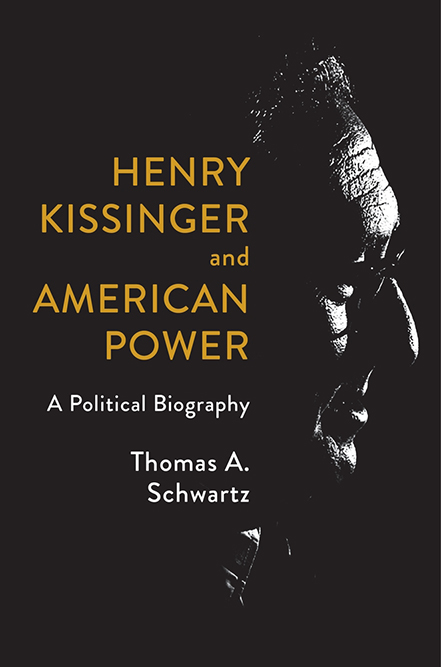The Fabric of Our Economy
Sven Beckert talks with Chapter 16 about how the history of cotton explains the origin of modern capitalism
History is often told through the stories of wars, famines, and presidents, but as Harvard historian Sven Beckert shows in his new book, it can also be told through a simple, everyday crop: cotton. The winner of the prestigious Bancroft Prize for history and a finalist for the Pulitzer Prize, Empire of Cotton ties together English capitalists, Indian weavers, and enslaved African Americans to tell an intricate and compelling story of the emergence of modern capitalism through the evolution of the global cotton industry. Beckert recently answered questions from Chapter 16 via email about how this lowly cash crop explains the world.
 Chapter 16: There have been a lot of books about world history as seen through a particular commodity—salt, sugar, coffee, and so on. What is so particular about cotton? How does cotton explain the world in a way that other commodities don’t?
Chapter 16: There have been a lot of books about world history as seen through a particular commodity—salt, sugar, coffee, and so on. What is so particular about cotton? How does cotton explain the world in a way that other commodities don’t?
Sven Beckert: Looking at sugar, coffee, or salt offers important perspectives on the history of the modern world, including the emerging links between distant regions of the globe. Cotton adds to these explanations because its history is not just about agricultural transformations, but also about manufacturing. Cotton was at the center of the world-altering industrial revolution and thus at the center of the moment that historians have called the “great divergence” between North Atlantic societies and the rest of the world. The cotton empire as I describe it connected distant regions of the world to one another, different forms of labor (especially wage labor and slavery), as well as agriculture and manufacturing; in short, its history allows us to understand the origins of modern capitalism.
Chapter 16: We tend to think of cotton as the quintessential Southern cash crop, but, as you point out, it didn’t begin to gain prominence until the end of the eighteenth century. What took so long, and why did it explode afterward?
Beckert: Cotton is indigenous to the southern United States, but very little of it was produced for world markets until the very last years of the eighteenth century. For a long time, most cotton traded on world markets came from the Ottoman Empire, India and West Africa. However, with the rapid expansion of cotton manufacturing in Europe in the eighteenth century, new demand for inexpensive cotton emerged, and increasingly it was planters in the West Indies who delivered that cotton. Unlike planters in the Ottoman Empire, they had almost unlimited land and labor available, dominating both violently. As cotton production for world markets increasingly occurred on lands stolen from its native inhabitants, and powered by slave labor, it migrated, by the second half of the eighteenth century, to Brazil.
The United States came to cotton growing in a real way only in the 1790s—at a moment when Caribbean production diminished, not least because of the revolutionary upheaval on Saint Domingue (the world’s most important cotton island). The United States had almost unlimited land available for cotton agriculture and also a very large number of enslaved workers who could be forcefully moved into cotton agriculture. The invention of Eli Whitney’s cotton gin then eased the separation of seed and fiber, allowing for the spread of upland cotton into areas far from the coast.
Chapter 16: One of the most interesting things to read in your book, from a Southern point of view, is the intense interest that the American Civil War and Reconstruction generated among cotton industrialists around the world, from Liverpool to Egypt to India. What explains that interest?
 Beckert: Cotton manufacturing by the mid-nineteenth century had become the world’s most significant manufacturing industry, and the well-being of many millions of Europeans depended on the well-being of that industry. They thus relied on a regular supply of inexpensive cotton, cotton that almost exclusively had come from the United States, where it was produced by enslaved workers. The Civil War disrupted this supply chain and created great social upheaval in European industrial cities. European manufacturers, as well as European politicians, had a great interest in creating a secure supply of cotton in response to what was in effect the world’s first raw-materials crisis. At first they looked to Egypt, India, and other places to secure that cotton. After the war they became involved in the process of reconstruction in the United States—pressuring the United States government to seek a settlement of the war that would allow for the resumption of cotton exports to Europe.
Beckert: Cotton manufacturing by the mid-nineteenth century had become the world’s most significant manufacturing industry, and the well-being of many millions of Europeans depended on the well-being of that industry. They thus relied on a regular supply of inexpensive cotton, cotton that almost exclusively had come from the United States, where it was produced by enslaved workers. The Civil War disrupted this supply chain and created great social upheaval in European industrial cities. European manufacturers, as well as European politicians, had a great interest in creating a secure supply of cotton in response to what was in effect the world’s first raw-materials crisis. At first they looked to Egypt, India, and other places to secure that cotton. After the war they became involved in the process of reconstruction in the United States—pressuring the United States government to seek a settlement of the war that would allow for the resumption of cotton exports to Europe.
Chapter 16: On a related note, the end of slavery in the United States and the resulting reconfiguration of labor mark perhaps the most critical turning point in your story. Why?
Beckert: As I mentioned, almost all cotton traded on world markets until 1861 had been produced by enslaved workers. As a result, many contemporary observers believed that the world’s cotton industry, and with it industrial capitalism, depended on slave labor. And, indeed, earlier efforts to produce cotton for world markets by employing wage workers or encouraging peasants had largely failed. Yet after the 1860s it became clear that new systems of labor could be pushed into the global countryside and could produce ever-increasing quantities of raw cotton—sharecropping primary among them. Industrial capitalism thus overcame its dependence on slavery, and it did so largely because by the end of the nineteenth century powerful colonial states, new infrastructures, and increasingly capital-rich Europeans had enabled new ways to access the labor of rural cultivators in much larger areas of the world.
Chapter 16: One thing your book makes clear is that while globalization is in some ways a recent phenomenon, industries like cotton production have been globalized for centuries. That said, what is the difference between the globalized cotton industry of the eighteenth and nineteenth centuries and today’s?
Beckert: Yes, there are striking continuities, especially when it comes to the scope of this industry. Already in the eighteenth century, the world’s cotton industry connected Asia, Europe, Africa, and the Americas to one another—and no part of the history of that industry can be understood in isolation from all the other parts. Today the geographic scope of the industry is broadly similar. But what has changed is the particular ways in which these various areas are connected to one another. Today, Asia, and especially China, is the manufacturing center of this industry, instead of Europe. Today, Asia is the world’s most important producer of raw cotton for world markets, instead of the United States. Today, power within the industry has shifted towards huge retailers and multinational brands, and away from manufacturers. Today, the power of individual states to regulate the industry has diminished. The world’s cotton industry, just like capitalism more broadly, has remained global, but the shape of that globality has changed.
Chapter 16: Finally, another point you make quite clearly is that while we think of something like the globalized cotton industry as a textbook example of free-market capitalism, in fact its emergence in certain parts of the world—Britain, the United States—and not others rested almost entirely on the strength of the central government. How does that upend our notions of free-market capitalism and the role of the state?
Beckert: The rise of capitalism and the emergence of ever more powerful nation states has gone hand in hand, one facilitating the strengthening of the other. A belief that states and capitalism are somewhat contradictory is historically inaccurate. Empire of Cotton shows how states were present in almost every aspect of the history of the world’s cotton industry—from securing the land on which cotton grows to protecting infant industries, from accessing technologies in distant lands to creating institutional frameworks for various forms of labor.

Nashville native Clay Risen is the author of A Nation on Fire: America in the Wake of the King Assassination and American Whiskey, Bourbon and Rye: A Guide to the Nation’s Favorite Spirit. His new book, The Bill of the Century: The Epic Battle for the Civil Rights Act, appeared in spring 2014. He lives in New York, where he is an editor at The New York Times.





